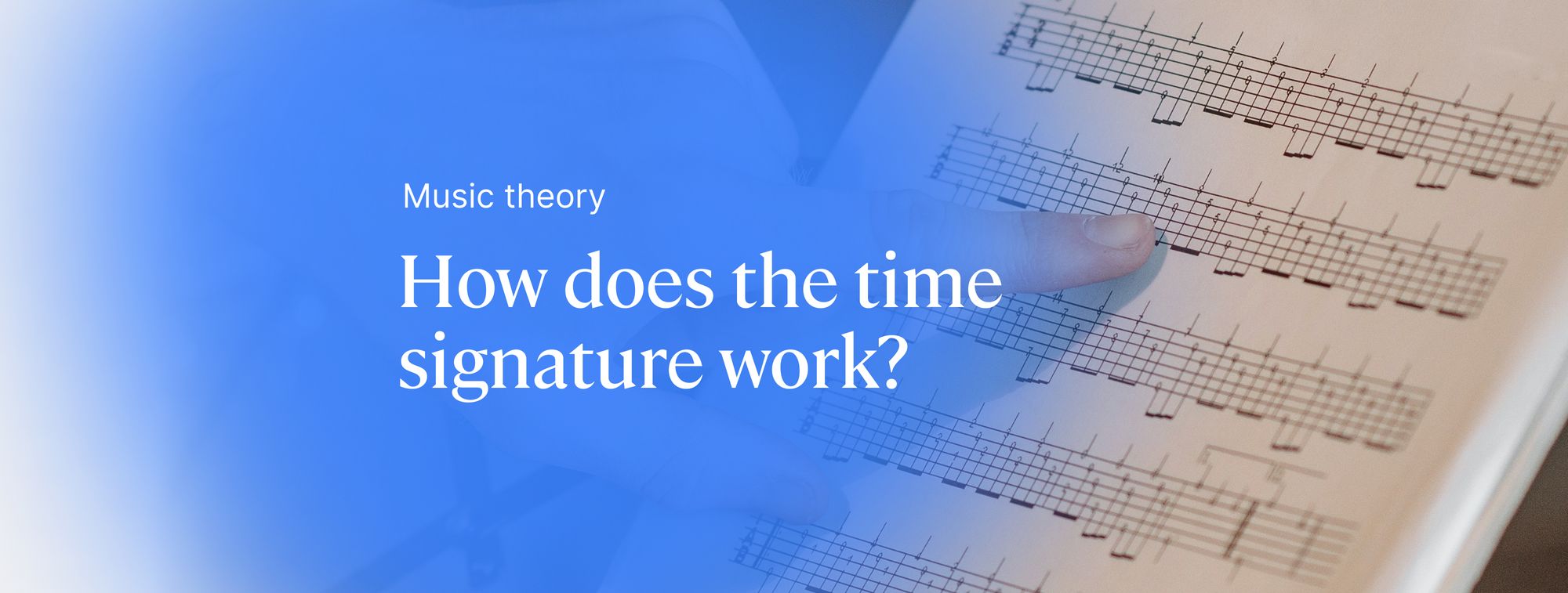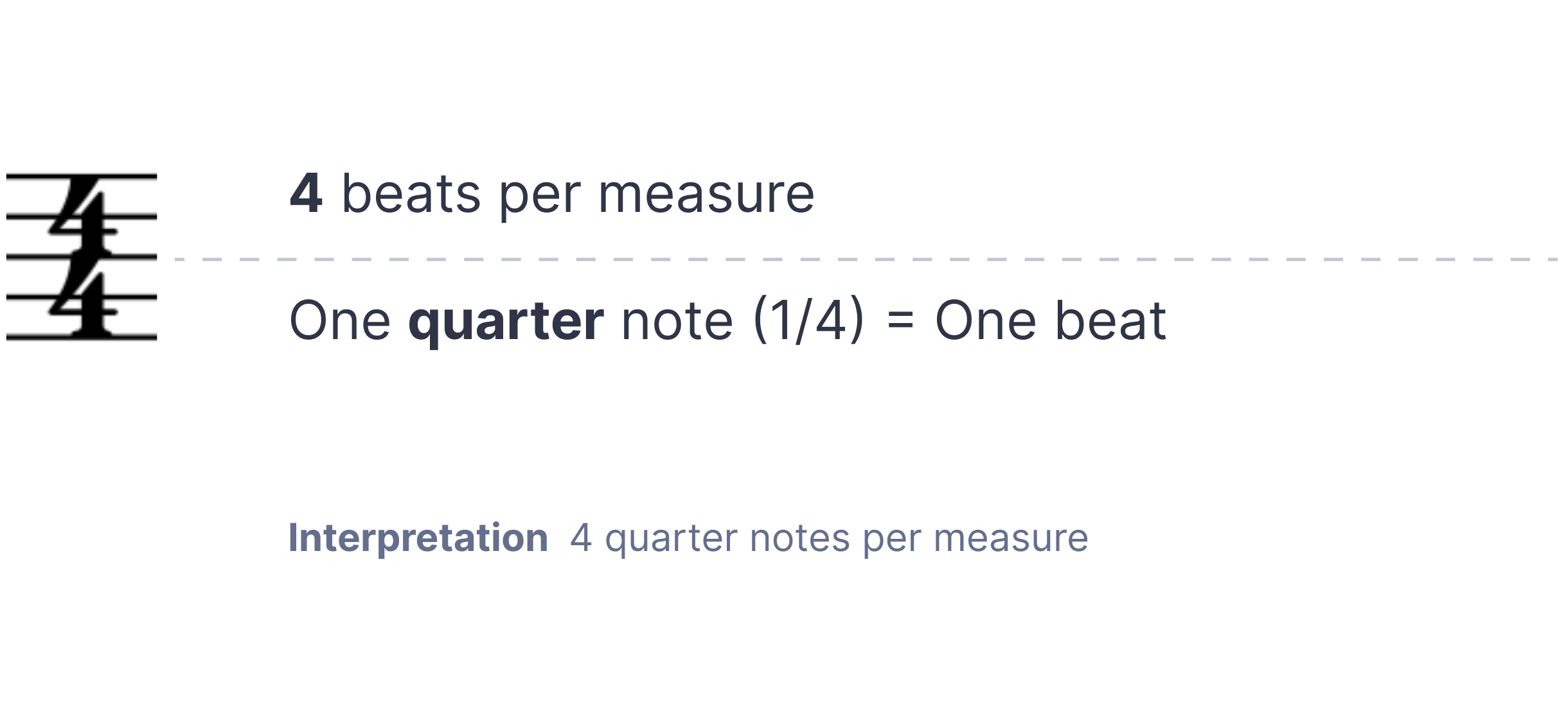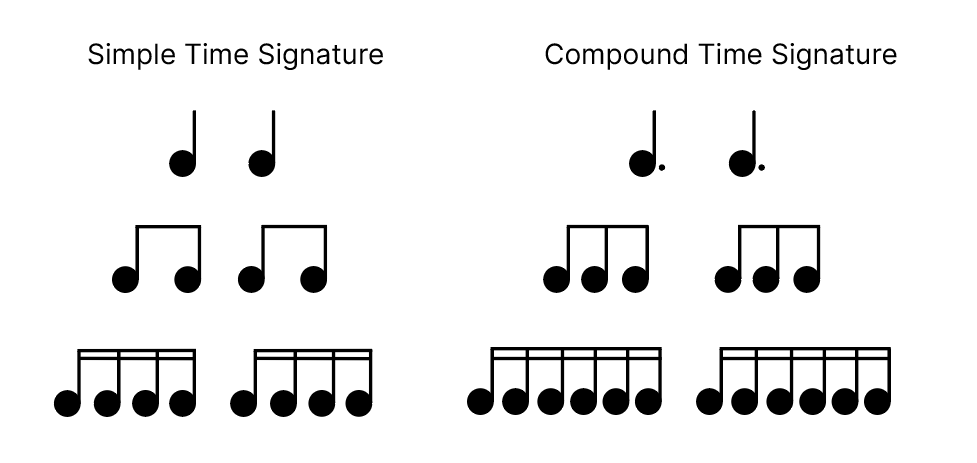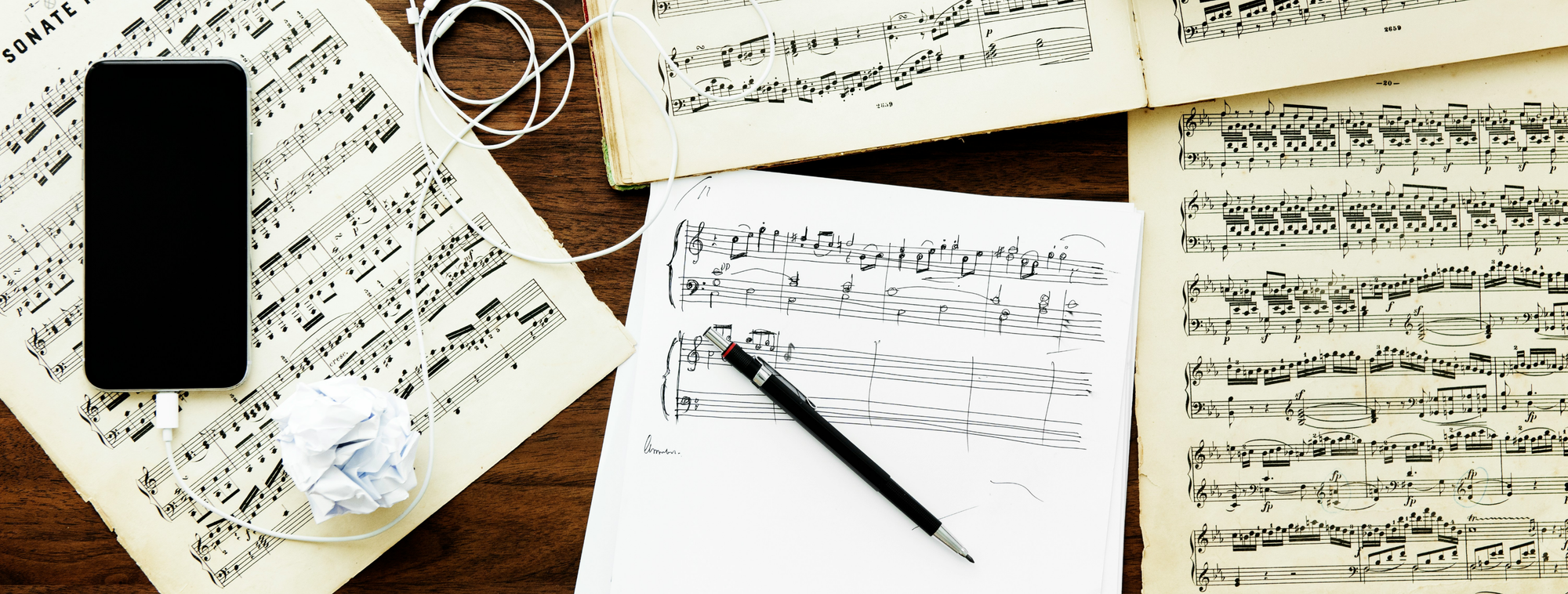Rhythm plays a vital role in when creating a song in a music notation software, and is essential for understanding the principles of musical theory. In our previous discussion, we introduced the concept of time signatures. Now, building on that foundation, let's explore this aspect more thoroughly.

Time signatures are divided into two types: regular and irregular. In simpler terms, we'll explore how to identify a song's time signature through careful listening.

🤓 Reviewing important concepts
Let's go over a few key points to ensure we have a solid understanding of time signatures.
As a quick refresher from our earlier discussion, the bottom number in the time signature represents the beat size, while the top number tells us how many of those beats are in each measure.

What is a regular time signature?
Let’s take a different approach today. We’ll start by looking at a few examples of regular time signatures. Your task is to see if these examples have something in common. After that, I’ll walk you through what makes a time signature "regular."
Regular Time Signature Examples
Example 1
4/4 = 4 quarter notes per measure

Example 2
3/4 = 3 quarter notes per measure

Example 3
6/8 = 6 eighth notes per measure

Example 3
9/8 = 3 groups of 3 eighth notes per measure

Now, there are two types of regular time signatures: i) simple, and ii) compound time signatures.
Regular Simple Time Singatures
In simple terms, time signatures with a top number divisible by 2, 3, or 4 are called "simple time signatures." If the number is divisible by 2, it's referred to as binary; if divisible by 3, it's ternary; and if divisible by 4, it's quaternary.
At first glance, binary and quaternary time signatures may seem similar since 4 is divisible by 2. However, there are important differences that influence the rhythmic feel of a piece of music, which we’ll explore in more detail soon.
As for the most commonly used time signature today, it’s likely no surprise that 4/4 is the standard in many music genres, including salsa, hip-hop, funk, electronic, and pop.
Now, let's take a closer look at how 2/2 compares to 4/4.
2/2 = two half notes (4 quarters) per measure

4/4 = 4 quarter notes per measure

Looks like the same, right?
Certainly, there are differences between them. While 2/2 isn't as commonly used today, it serves a specific purpose by allowing for a quicker tempo. If you tried to play at the same speed in 4/4, it might feel a bit off, like a runner who's slightly out of sync. 🏃♂️🎵
If you’d like to dive deeper into the topic, I recommend watching this video:
While 4/4 is the most commonly used time signature, there are many others that bring a different feel to the music we create.
Let’s explore some great songs with different time signatures!
This is 4/4:
This is 3/4:
This is 7/4:
The compound time signature
This type of time signature comes from the need to subdivide each beat into three parts. In other words, every beat in the measure has three sub-beats.
👀 While you could use triplets in a 4/4 time signature to create a similar rhythm, it's not the most practical approach.

In other words, each beat in a measure with an x/4 time signature would be subdivided in a binary form. In contrast, a beat in a measure with an x/8 time signature would be subdivided in a ternary form, giving the music a swing feel 🕺🏽.
This would be represented like this:

The unit of tempo for 4/4 is a quarter note (equal to 2 eighth notes), while the unit of tempo for 3/8 is a dotted quarter note (equal to 3 eighth notes). Keep in mind, tempo and time signature are not the same thing❗️


✨ Perhaps you will understand this better with an example.
3/4 vs 6/8
You might think these time signatures are the same, but spoiler alert: they’re not. While both have six eighth notes per measure, 3/4 has 3 beats, and 6/8 has 2 beats. You’ll notice the difference by listening to where the accents fall in the bars.

💡If you don't remember how the accents work, you can check out the article below:

Now, let’s talk about 12/8.
This time signature became popular in blues music, a genre known for its swing. Its unique feel makes it perfect for capturing the rhythm and dynamic energy that define blues music.
Let's listen to an example:
You might say, "Muddy Waters counted to four at the beginning of the song!" And you’d be right. In this type of measure, the counting is in 4, but the division is in groups of 3. So, there are 12 notes in each measure 💁.

This is another example of a song in 12/8:
12/8 vs 6/8
These time signatures are quite similar. You might think 12/8 is just two 6/8 measures, but they’re not the same—they have a different feel.
How do you tell them apart? Listen to the accent!
However, it can be tricky, especially with drums or percussion. I suggest looking for additional clues, like changes in harmony, to help identify the time signature.
Let's listen to this song:
In this case, you can tell it’s in 6/8, not 12/8, because the guitar changes harmony every 6 beats. Try the counting exercise, and you’ll see I’m not kidding 🙈.
Simple vs. Compound Time Signatures
Let’s review what we’ve covered so far!
The key difference between simple and compound time signatures lies in the bottom number and how the beats are divided. In a simple time signature, like x/4, the beats are divided in a binary way. In a compound time signature, like x/8, the beats are divided in a ternary way.

Additionally, in simple time signatures, the unit of tempo is a quarter note, while in compound time signatures, it’s a dotted quarter note.


What these two types of time signatures have in common is the symmetry within each measure. As shown in the image below, the subdivision in both simple and compound time signatures always creates a balanced, symmetrical structure within the bar.

Now, the irregular time signature has no symmetry 🤯. Having said that, let's dig deeper into this type of time signature.
The irregular time signature
✋🏾 Before we define what an irregular time signature is, let’s take a look at an example: 7/8.

If you try to group the notes to create symmetry, it won’t work. When you divide it like a regular simple time signature, you’ll end up with an extra eighth note.

Now, if you try grouping the notes like you would in a compound time signature, you’ll still have one eighth note left over.

As you can see, irregular time signatures lack symmetry. This happens because they combine elements of both regular simple time signatures and compound time signatures 💁🏼.

We divide the measure in a way that creates some order, but the subdivision depends on the rhythm we want to achieve. We’ll explore this in more detail in an upcoming article.
If you listen to a song with an irregular time signature and try to clap along in x/4, you’ll likely get lost 🤪. Irregular time signatures make it difficult to follow the rhythm by clapping or nodding along. They also create a sense of suspension, as if the bars are incomplete. It’s not that they’re incomplete; it’s just that irregular time signatures aren’t common in popular or commercial music, so we’re less familiar with them.
I’ll share a couple of songs with this type of time signature for you to check out!
Time signature: 7/8
Time signature: 13/8
Time signature: 5/8
🔥 Pro tip: How to count in these types of time signatures
There are two ways to count irregular time signatures. The first is by counting each eighth note individually.

That method works well for time signatures like 5/8. However, for larger time signatures, it can get tricky, so it’s better to count in quarter notes or dotted quarter notes instead.

To wrap up, remember that a song's time signature can change or sometimes include complex patterns. For example, Tool's "Schism" often alternates between 5/8 and 7/8 throughout the song.
🎧 Don’t be overwhelmed or intimidated by the complexity of time signatures in some songs. The key is to start simple and build your understanding step by step. Also, listen to a wide range of music—you’ll get more familiar with different time signatures over time.

How to recognize the time signature of a song
The best way is by using your hands 👏🏿. Listen closely to the song—start by clapping along to find the pulse, then listen for the accents, and finally, figure out how each pulse is subdivided. The pulse and accents tell you how many beats are in each measure, while the subdivisions reveal the type of beat. And remember, the key to improvement is practice, practice, practice.
Here’s a little tech hack 🤫: on this page, you can enter the song’s name, and voilà! You’ll get all the details about its time signature.
I recommend using both methods: listen to music and try to discover the time signatures on your own, then check your findings online.
That’s all for today! I hope you found this article helpful. Don’t forget to apply what you’ve learned using your music notation software—practice is key to getting better at music!
See you next time!

